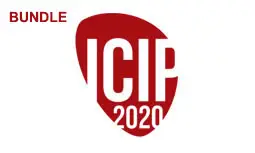Point Cloud Compression in MPEG Speakers - Part 6
Danillo B. Graziosi, Ohji Nakagami, Khaled Mammou, Marius Preda
-
Members: FreeSPS
IEEE Members: $11.00
Non-members: $15.00Length: 11:06
25 Oct 2020
Consumer and industry level 3D sensing devices are becoming more common than ever before, increasing the amount of available 3D data. 3D scans can capture the full geometry and details of a 3D scene, and are useful in many applications including virtual reality, 3D video, robotics and geographic information access. Among many representation formats for 3D data, point clouds are a tradeoff between the easiness of acquisition, realistic rendering, facility in manipulation and processing. However, point clouds are typically represented by extremely large amounts of data, which is a significant barrier for mass market applications. To address this challenge, the Moving Pictures Experts Group (MPEG) initiated a standardization activity on Point Cloud Compression (PCC).
This tutorial introduces the technologies developed during the MPEG standardization process for defining an international standard for point cloud compression. The diversity of point clouds in terms of density conducted to the design of two approaches: the first one, called V-PCC (Video based Point Cloud Compression) consists in projecting the 3D space into a set of 2D patches and encodes them by using traditional video technologies. The second one, called G-PCC (Geometry based Point Cloud Compression) is traversing directly the 3D space in order to create the predictors.
With the current V-PCC encoder implementation providing a compression of 125:1, a dynamic point cloud of 1 million points could be encoded at 8 Mbit/s with good perceptual quality. For the second approach, the current implementation of a lossless, intra-frame G PCC encoder provides a compression ratio up to 10:1 and acceptable quality lossy coding of ratio up to 35:1.
By providing high-level immersiveness at currently available bandwidths, the two MPEG standards are expected to enable several applications such as six Degrees of Freedom (6 DoF) immersive media, virtual reality (VR) / augmented reality (AR), immersive real-time communication, autonomous driving, cultural heritage, and a mix of individual point cloud objects with background 2D/360-degree video.
This tutorial introduces the technologies developed during the MPEG standardization process for defining an international standard for point cloud compression. The diversity of point clouds in terms of density conducted to the design of two approaches: the first one, called V-PCC (Video based Point Cloud Compression) consists in projecting the 3D space into a set of 2D patches and encodes them by using traditional video technologies. The second one, called G-PCC (Geometry based Point Cloud Compression) is traversing directly the 3D space in order to create the predictors.
With the current V-PCC encoder implementation providing a compression of 125:1, a dynamic point cloud of 1 million points could be encoded at 8 Mbit/s with good perceptual quality. For the second approach, the current implementation of a lossless, intra-frame G PCC encoder provides a compression ratio up to 10:1 and acceptable quality lossy coding of ratio up to 35:1.
By providing high-level immersiveness at currently available bandwidths, the two MPEG standards are expected to enable several applications such as six Degrees of Freedom (6 DoF) immersive media, virtual reality (VR) / augmented reality (AR), immersive real-time communication, autonomous driving, cultural heritage, and a mix of individual point cloud objects with background 2D/360-degree video.



